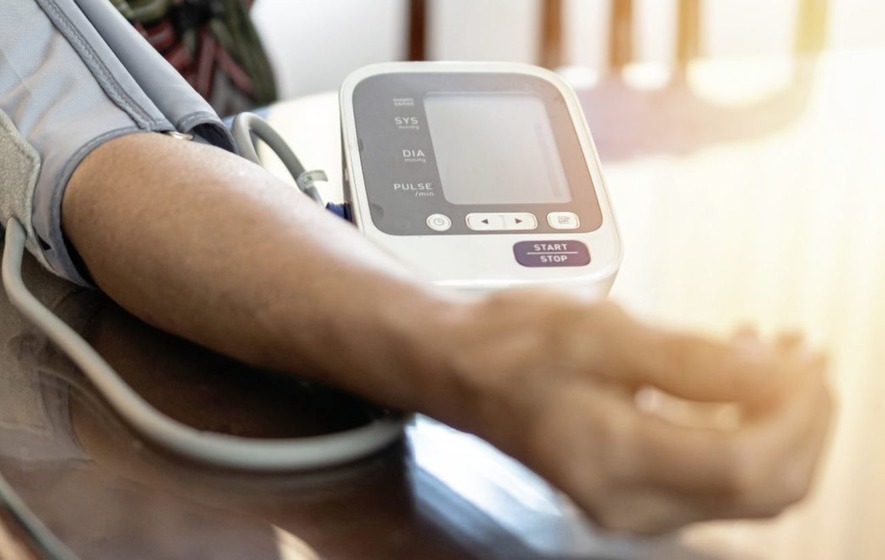Source – https://www.irishnews.com/
Q: MY blood pressure worries me. The top number is very high, between 138 and 216, while the bottom number is in the 70s and 80s. But I have not used salt on my food for 30 years, I do not smoke and rarely drink. I eat lots of fruit and veg and have good cholesterol levels. I can’t work out why I have this problem. Can you suggest a solution?
KB
A: I CAN see why you are puzzled, and there are probably many readers in a similar position. Let me start with a short tutorial on what the blood pressure readings mean.
A reading consists of two figures. The top number is the systolic pressure, the pressure in the arteries when the heart contracts, pushing out blood (about 140ml, a teacupful) with each beat. A normal reading is 120 or lower.
The second figure, the diastolic pressure, is when the heart relaxes between beats – this should be 80 or lower. If the reading is consistently above 140 over 90, this is known as hypertension.
What you describe is a subtype called isolated systolic hypertension (ISH), where the systolic (top) reading is above 140 and the diastolic number is below 90. This condition affects older patients; studies have shown that systolic pressure rises and diastolic pressure falls after the age of 60. The elevated pressure is due to a reduction in the stretchiness or elasticity of the artery walls – part of the ageing process.
ISH accounts for up to 80 per cent of cases of high blood pressure in this age group. Other risk factors include obesity, lack of exercise, genetics (such as hypertension in one or both parents), and a high salt intake.
Treatment for all types of hypertension is essential because it can lead to heart disease, heart attacks, stroke, kidney dysfunction, and left ventricular hypertrophy (an enlargement and thickening of the walls of the heart’s main pumping chamber).
Treatment can involve lifestyle changes, such as salt restriction, exercise and weight loss, and long-term medication.
Even if you do not add salt to your food, bear in mind that many manufactured foods, such as ready-meals, contain a lot of ‘hidden’ salt. We shouldn’t be consuming more than 6g (around a teaspoon) of salt a day, so always check food labels.
Studies have confirmed the effectiveness of these lifestyle measures in controlling blood pressure. However, if they fail to bring the systolic reading down after some months, drug therapy must be started.
It is unclear whether you are already under the care of a specialist, but I would suggest you see your GP about starting on medication, as you appear to have ISH despite leading a healthy lifestyle.
This is not the place for me to describe the different classes of drugs available, that is a task for your GP, who has a full understanding of your medical history – crucial in your case as we don’t want to cause your diastolic reading to drop too low. If that happens, you can develop complications such as dizziness, or even fainting when you stand up.
The aim should be a gradual blood pressure reduction over three to six months. Of course, this takes time, observation, and regular appointments – rather scarce features at the best of times, let alone during a pandemic.
Q: WE are told continually that more men die from prostate cancer than women die from breast cancer, so why doesn’t the NHS routinely check for it?
NB
A: THERE are nearly 50,000 new cases of prostate cancer a year in the UK. One man in six will be diagnosed with it, and it’s responsible for more than 11,000 deaths a year. With such statistics, it would seem sensible to screen all men of a certain age. After all, we are often told that early treatment saves lives.
Introducing screening for prostate cancer, however, is far from simple. The prostate specific antigen (PSA) test is not ideal for screening and we are unable to determine whether a man has a slow-growing cancer that may never cause him any problems or an aggressive tumour that, unless treated, will be a killer.
Surgery, radiotherapy, chemotherapy and hormone-suppressant drugs all carry the risk of side-effects such as incontinence and impotence.
A European screening trial that monitored men for 13 years showed that routine screening with the PSA test cut deaths by 21 per cent. However, in order to save one life, 781 men had to be screened and 27 of them treated. In other words, the reduction in deaths was at the expense of considerable over-diagnosis and over-treatment.
On that basis, the most sensible route is for men to be aware and see the GP when they have urinary symptoms: increased frequency, particularly at night, a sense of incomplete emptying, poor stream, or straining to empty the bladder.
Mostly these symptoms are due to benign enlargement of the prostate, but when they persist, it is a reason to be checked.
